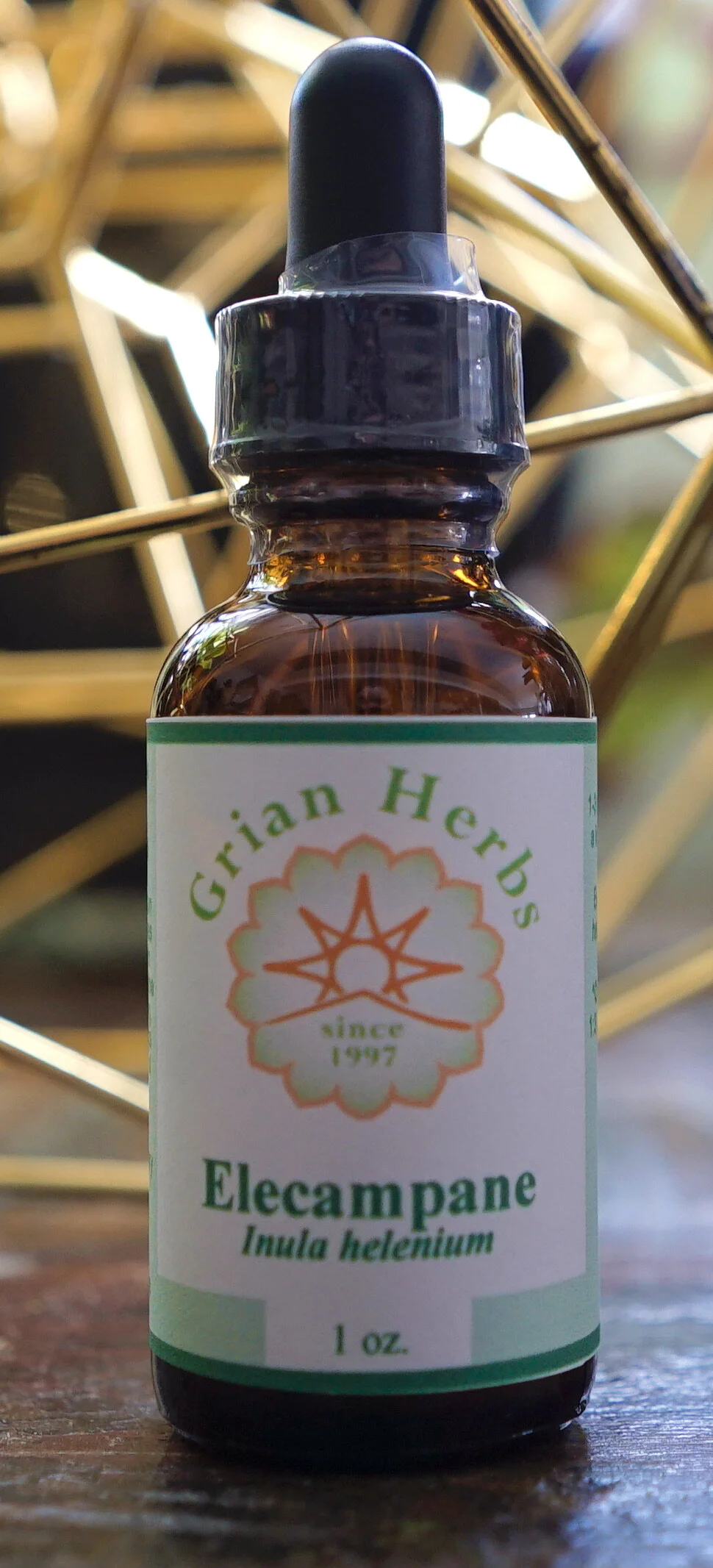Elecampane (Inula Helenium)
Elecampane (Inula Helenium)
This very warming, spicy plant is a member of the Aster family, the Compositae. It flowers tall and quite beautifully from its large basal leaves, in clusters of yellow flowers with long, stringy petals. We collect its roots in late September and October, once the seed is completely dispersed. It does quite well in any soil type, although it prefers moisture and will make good use of any extra fertility it is given.
Elemental associations: Air
Phytochemistry: Volatile oil (sesquiterpene lactones), polysaccharides (especially inulin)
Actions: Expectorant, anti-bacterial, diaphoretic, demulcent
Specific systems: Respiratory
Elecampane is quite simply one of the best expectorants we know. It is strong in action however, and if the constitution is weak a gentler effect can be obtained with herbs like Mullein and Licorice. However, this herb should always be considered both in cases of acute pulmonary congestion and/or infection, and to help loosen stubborn, chronic coughs. It also helps soothe mucus membranes with its inulin and mucilage content.
Amongst the ‘docks’, or large-leafed, weedy plants prized for their roots, Elecampane has a special affinity to the more ‘unseen’ realms, being called ‘elf dock’, gathered and carried to aid in the second sight. This is echoed in its elemental association.
Indications: Bronchitis, Tuberculosis, Pneumonia, chronic chest congestion / cough
Contraindications: Pregnancy
Preparation/Dosage: A decoction can be made from the root, fresh or dry, although its flavor will be quite intense and might require a little honey. However, its bitterness can also help stimulate appetite in the patient! Use 3 TBS. Per pint of water. The tincture is also quite effective, taken in some warm water. Use ½ tsp. 3-5 times daily in an acute situation; half that for chronic conditions.
Size: 1 fl oz

